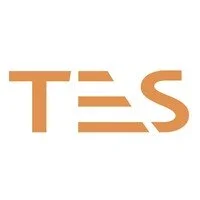Track Trolley
Initial / Recert
Course Summary
This module is designed to train delegates who are responsible for undertaking track maintenance or renewals where they are required to operate Portable, Transportable and Mobile Plant (Trolley Equipment) in their daily work.
Course Aim
Provide the underpinning knowledge and practical experience on the safe and effective operations of the Portable and Transportable Plant (Trolley Equipment).
Pre-requisites & Requirements
Delegates must:
Must be a minimum age of 16.
Before attending this training the delegate should have successfully completed Personal Track Safety.
Additional Information
At the end of the training the delegate will be able to:
Complete appropriate pre-use checks to ensure that the hand trolley is fit for use.
·Select and use appropriate PPE appropriate to using a hand trolley.
Understand what safe systems are required to be put in place prior to the hand trolley being placed on the track and after it is removed from the track.
Assemble, load, operate and control the hand trolley safely taking account of manufacturer instructions.
Why Hold Track Trolley?
The Track Trolley Controller is a specialised operational role responsible for the safe operation of lightweight, rail-mounted trolleys used to transport tools, equipment, and materials along the railway track. While seemingly simple, the controlled movement of any item on the railway line requires strict adherence to safety protocols to prevent incidents.
What is a Track Trolley Controller?
A Track Trolley Controller is a trained and competent individual who is authorised to operate and manage the movement of a track trolley. This includes ensuring the trolley is safely loaded, operated according to railway rules, protected from train movements, and removed from the line efficiently. They are crucial for moving essential equipment to work sites where road access is limited or impractical.
Key Duties and Responsibilities of a Track Trolley Controller:
The role of a Track Trolley Controller demands a meticulous approach to safety, strong communication, and practical competence in handling equipment. Their duties typically include:
Pre-Use Checks: Conducting thorough safety checks on the track trolley before each use, ensuring it is in good working order and safely loaded.
Operating Safely: Pushing or operating the trolley according to specified railway rules, maintaining safe speeds, and always being ready to stop.
Managing Load: Ensuring the trolley is not overloaded and that all materials are securely fastened to prevent them from falling onto the track or obstructing operations.
Maintaining Lookout: Being constantly vigilant for approaching trains, even when working under the protection of a COSS, and ensuring the trolley can be quickly removed from the line if a train approaches.
Positioning of Safety: Knowing and being able to quickly move the trolley and any accompanying personnel to a safe position (off the line or in a defined safe zone) when trains are due or detected.
Communication: Communicating effectively with the COSS (Controller of Site Safety), lookout (if applicable), and any other personnel involved in the movement.
Secure Removal: Ensuring the trolley is completely clear of the running line and securely stored when not in use or when the work block ends.
Fault Reporting: Immediately reporting any defects or issues with the trolley or the track that could affect its safe operation.
Where a Track Trolley Controller can work within TES:
The Track Trolley Controller competence is valuable across TES's operational departments, particularly where hand-portable materials or tools need to be moved efficiently along the track. They are commonly found in:
Permanent Way (P-Way): Frequently used during track maintenance, repairs, or minor renewals to move tools, small components, or welding equipment along the track.
Electrification (OLE / 3rd Rail): Transporting equipment, small cable drums, or components for OLE or third rail maintenance tasks.
Technical Services: Moving specialised testing equipment or tools to lineside signalling or telecoms assets.
Site Logistics: Enhancing the efficiency of material movement within a work site during possessions or smaller work blocks.
Let’s Learn Together
Interested in our NSAR Gold Standard team training your staff?
Fill out some info and we will be in touch shortly!
We can't wait to hear from you!
Explore more of TES
Want to explore more of what TES have to offer? Use the search function below

